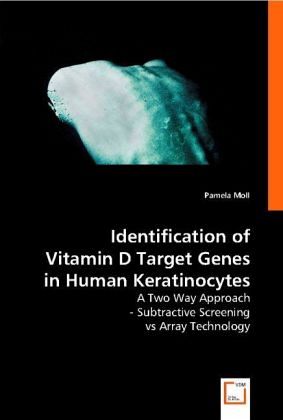
Identification of Vitamin D Target Genes in Human Keratinocytes
A Two Way Approach - Subtractive Screening vs Array Technology
Versandkostenfrei!
Versandfertig in 6-10 Tagen
32,99 €
inkl. MwSt.

PAYBACK Punkte
16 °P sammeln!
Vitamin D has attracted much attention by its ability to stop cell proliferation and induce differentiation, which is of particular interest for the treatment of cancer and skin diseases such as psoriasis. However, in higher concentrations vitamin D is toxic causing hypercalcaemia, which leads to calcification of inner organs and even death. These toxic effects are prohibitive for its widespread use. The characterization of vitamin D target genes in human keratinocytes should help to understand its mode of action and facilitate the search for vitamin D analogues, which have the positive anti-p...
Vitamin D has attracted much attention by its ability to stop cell proliferation and induce differentiation, which is of particular interest for the treatment of cancer and skin diseases such as psoriasis. However, in higher concentrations vitamin D is toxic causing hypercalcaemia, which leads to calcification of inner organs and even death. These toxic effects are prohibitive for its widespread use. The characterization of vitamin D target genes in human keratinocytes should help to understand its mode of action and facilitate the search for vitamin D analogues, which have the positive anti-proliferative effects but not the toxicity of vitamin D. This book deals with the identification of vitamin D target genes in human keratinoctes using two different approaches: subtractive hybridization and filter array experiments. Here, the detailed methods employed as well as the identification of several previously unreported vitamin D target genes are described.Although this book is primarily intended for scientists, in particular for molecular biologist and medical doctors, the introduction opens an appealing insight in the fascinating topic of skin and vitamin D for everybody.












